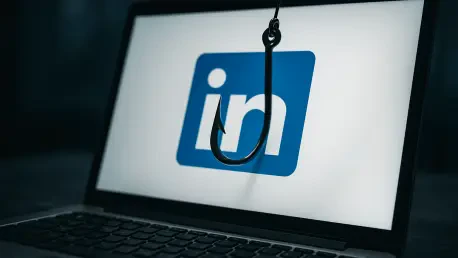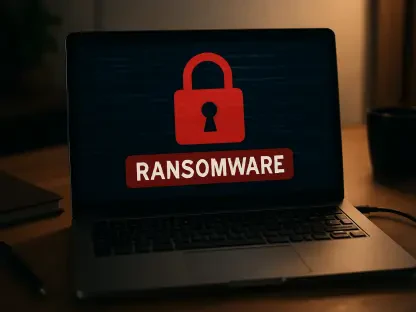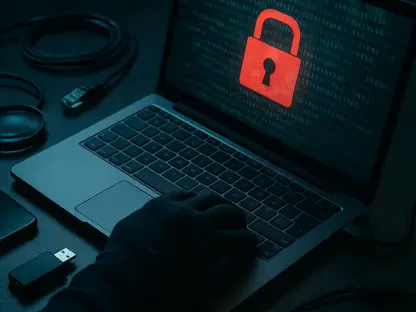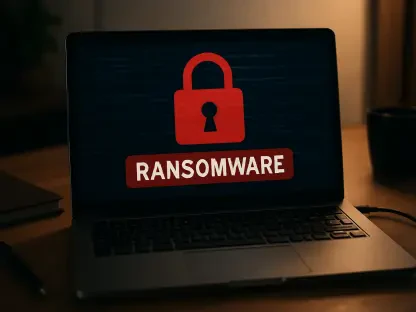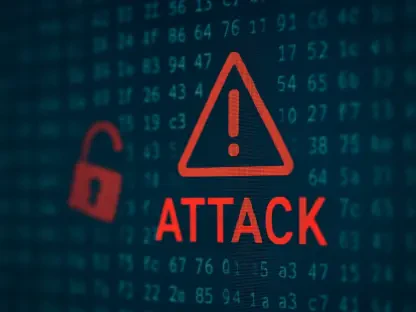In a world where professional networking happens with just a single click, LinkedIn has become the cornerstone of career growth and corporate connections for millions of users across the globe, but beneath this polished platform lies a darker reality. A staggering rise in phishing attacks targeting unsuspecting professionals has emerged, with cybercriminals exploiting trust and bypassing traditional defenses, where a single deceptive message can unravel personal security or even compromise entire organizations. This alarming trend raises critical questions about safety on social platforms once deemed secure for business interactions. Dive into the hidden dangers as the reasons behind LinkedIn’s allure for attackers are uncovered.
The Hidden Danger in Professional Networking
LinkedIn stands as a vital tool for job seekers, recruiters, and executives alike, fostering connections that shape industries. Yet, this very strength—its role as a trusted professional hub—has transformed it into a prime target for phishing schemes. Cybercriminals have shifted focus from email inboxes to social platforms, recognizing that users often lower their guard when networking. The stakes are high, as a breached account can lead to corporate espionage or financial losses running into millions, making this threat impossible to ignore for businesses and individuals.
The importance of addressing this issue cannot be overstated. With spear-phishing attacks increasingly tailored to high-value targets like C-suite executives, the potential for widespread damage grows daily. Cybersecurity reports indicate that social media credentials, often unprotected by robust measures, account for 60% of stolen data in infostealer logs. This vulnerability, paired with LinkedIn’s direct messaging system, creates a perfect storm for attackers seeking to exploit professional trust and infiltrate secure systems.
Bypassing the Usual Safeguards
One of the primary reasons LinkedIn attracts phishing attacks is its ability to evade conventional security tools. Unlike email, where filters and quarantines catch malicious content before it reaches users, LinkedIn’s direct messages slip through undetected on corporate devices. Security teams often lack visibility into these communications, leaving employees exposed to sophisticated scams that traditional defenses simply cannot intercept.
This gap in protection poses a significant challenge for organizations. Modern phishing kits use advanced obfuscation techniques, rendering standard webpage inspection or traffic analysis tools ineffective. Even when suspicious activity is flagged, there’s no mechanism to recall messages or block senders across accounts, allowing attackers to operate with near impunity. Companies must grapple with a reactive stance, struggling to keep pace with threats that evolve faster than their safeguards.
Scalability and Low Barriers for Attackers
Phishing on LinkedIn offers cybercriminals an unmatched advantage in terms of cost and reach. While email-based attacks require building domain credibility over time, attackers on this platform can hijack existing accounts to gain instant trust. With a majority of compromised social media credentials lacking multi-factor authentication, launching credible campaigns becomes a low-effort, high-impact endeavor for malicious actors.
The scalability of these attacks is further amplified by artificial intelligence. AI-driven messaging tools enable attackers to craft personalized phishing attempts at scale, targeting hundreds or thousands of users with minimal investment. This efficiency turns LinkedIn into a goldmine for those looking to exploit vulnerabilities without the overhead of traditional phishing infrastructure, posing a persistent threat to unsuspecting users.
Direct Line to High-Value Targets
LinkedIn’s structure provides attackers with a clear roadmap to high-value individuals within organizations. By mapping hierarchies and identifying roles through public profiles, cybercriminals can pinpoint executives or employees with access to sensitive systems. This direct access, unhindered by spam filters or gatekeepers, makes spear-phishing far more effective than email-based attempts.
The implications of this targeting are profound. A single successful attack on a senior leader can unlock proprietary data or facilitate broader network infiltration. With no barriers to inbox entry, attackers capitalize on the professional expectation of connecting with external contacts, turning a platform built for opportunity into a gateway for exploitation that businesses must urgently address.
Trust as a Double-Edged Sword
The culture of openness on LinkedIn, where users readily accept connection requests and engage with messages, plays directly into the hands of phishers. Professionals, conditioned to network with strangers as part of career growth, often overlook red flags in communications. This inherent trust becomes a vulnerability when attackers mimic known contacts or craft urgent pretexts like document approvals.
Such social engineering tactics exploit human behavior in ways that technical defenses cannot counter. When a message appears to come from a colleague or industry peer, hesitation diminishes, and the likelihood of clicking a malicious link skyrockets. This dynamic mirrors past email breaches but operates without the safety net of security oversight, amplifying the risk on a platform designed for collaboration.
Massive Stakes for Corporate Security
Perhaps the most chilling aspect of LinkedIn phishing is the potential reward for attackers. A compromised account can serve as a backdoor to enterprise systems like Microsoft or Okta through single sign-on mechanisms. From there, cybercriminals can access core business applications, sensitive data, and even internal messaging platforms, creating ripple effects across entire organizations.
Real-world incidents underscore the gravity of these breaches. A notable case involving synced credentials on personal devices led to widespread corporate compromise, costing millions in damages. These high stakes highlight why attackers prioritize LinkedIn—success on this platform often translates to unparalleled access, making it a critical battleground for cybersecurity efforts in protecting both individual and organizational assets.
Voices from the Cybersecurity Trenches
Insights from industry experts paint a stark picture of the evolving threat landscape. A seasoned cybersecurity analyst remarked, “Email defenses are no match for social media phishing—without modern tools, there’s zero visibility or control over these channels.” This sentiment echoes across the field, as specialists note the low adoption of multi-factor authentication on platforms perceived as personal rather than professional.
Case studies further illuminate the risks at play. Breaches originating from social media logins have repeatedly demonstrated how personal vulnerabilities spill into corporate environments, often through browser data or shared credentials. These frontline perspectives emphasize an urgent need for solutions that extend beyond email, addressing phishing wherever it strikes in today’s decentralized digital ecosystem.
Building a Stronger Defense
Looking back, the battle against LinkedIn phishing revealed a critical need for adaptive strategies that had to evolve with the threat. Organizations found success by implementing multi-factor authentication to secure accounts against stolen credentials. Scrutinizing connection requests and messages became a standard practice, with verification through alternate channels proving essential in preventing deception.
Educational initiatives also played a pivotal role, as training employees to recognize phishing tactics helped mitigate risks rooted in professional trust. Investments in browser-based security tools offered real-time detection across platforms, closing gaps that traditional systems missed. Encouraging immediate reporting of suspicious activity, paired with clear escalation protocols, ensured that potential threats were addressed swiftly, paving the way for a safer networking environment in the years that followed.
